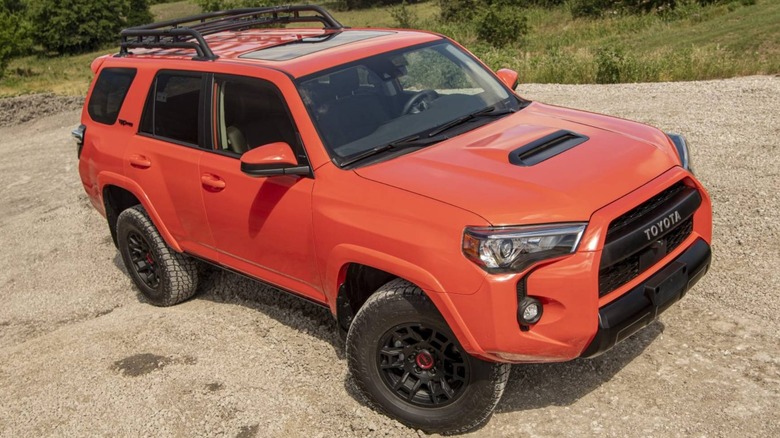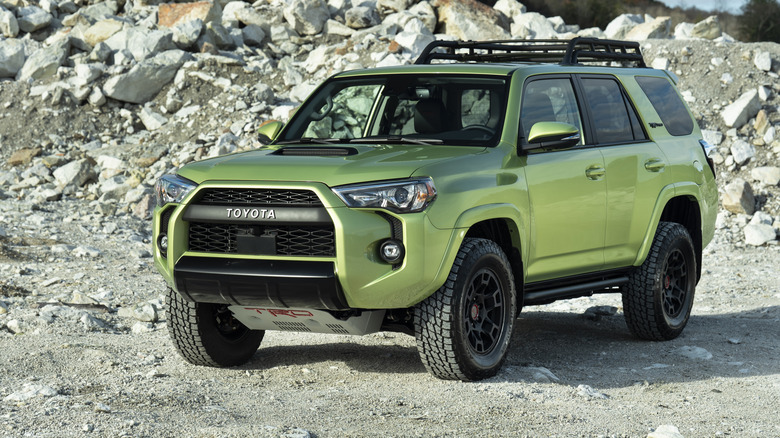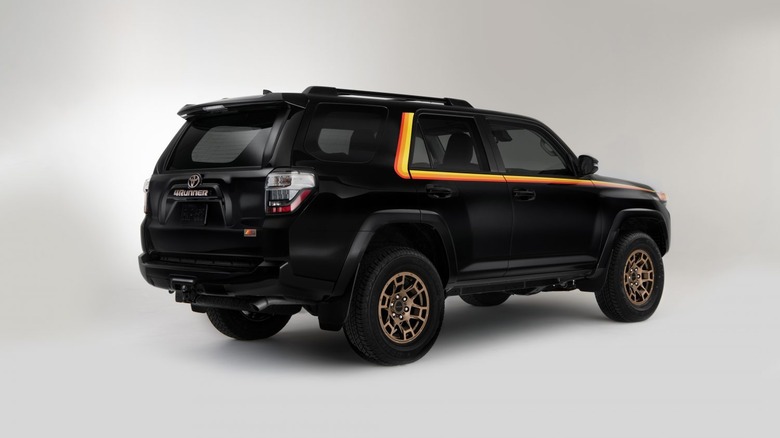Why The Toyota 4Runner Has Such Low MPG
The Toyota 4Runner is a legendary SUV known for its rugged off-road capability. Despite being one of the most influential vehicles and having a reputation for reliability that spans many years, the 4Runner's miles per gallon (MPG) ratings often leave drivers disappointed, especially in this era when fuel economy is more important than ever.
As fuel costs slowly rise and environmental concerns push automakers like Nissan to advocate for carbon neutrality, the 4Runner stands apart, resisting the shift. At the heart of its inefficiency is a dated 270-HP 4.0-liter V-6 powertrain, which delivers just 16 MPG in the city and 19 MPG on the highway — figures that lag behind modern expectations.
The 4Runner's low fuel economy stems from its thirsty engine, hefty weight, design, and focus on off-road performance. While these features make it stand out for adventures, they also place it at odds with the growing demand for efficiency.
The 4Runner's wasn't built for gas savings
The Toyota 4Runner's poor fuel economy is largely due to its heavy, off-road-focused design. Many modern SUVs are lighter because they are designed with a unibody or single-body construction. For instance, the Ford Bronco Sport and the Jeep Cherokee have a unibody design, which contributes to their weights of 3,467 pounds and 4,250 pounds, respectively. On the other hand, the 4Runner uses a mechanical body-on-frame platform. This makes the SUV heavier — the 4Runner weighs between 4,400 and 4,805 lbs and has a gross weight rating of 6,100 lbs — amplified by all the extra off-road equipment, such as the suspension, four-wheel-drive capabilities, and larger tires.
This is because Toyota's approach favors reliability. While competitors may use lighter aluminum components or even plastic to reduce weight, Toyota relies on heavy, high-quality steel and metal parts, directly impacting gas mileage and making the 4Runner less efficient for daily urban use. Despite its inefficiency, the 4Runner is built to handle any challenge.
The 4Runner uses a dated transmission
The Toyota 4Runner has been using the same transmission — a 5-speed automatic — since 2005. It could be due to the tried-and-true nature of the transmission or Toyota's "if it isn't broken, don't fix it" approach. Either way, it was efficient for its time but now lags behind modern standards.
The 5-speed automatic once provided smoother performance and better fuel efficiency over older 4-speed and 3-speed designs in the Bronco and the Chevrolet Trailblazer. However, as other automakers have advanced their powertrains, introducing 8-speed and 10-speed systems, the 4Runner 5-speed feels outdated and less competitive. There was a time when buyers could have the 4Runner with a manual transmission, but Toyota eventually phased it out. As appealing as a modern manual version might sound, there are several reasons why Toyota won't build a new manual 4Runner version anytime soon.
Competitors like the newer Land Rover Defender feature an 8-speed automatic, which offers slightly better MPG ratings and good highway performance. In contrast, the 4Runner's fewer gears mean higher RPMs and higher fuel consumption, especially during long drives. On the bright side, the 4Runner still has an advantage with its lower gears — good low-end torque for off-road driving.
The 4Runner's off-road performance and equipment
The Toyota 4Runner was created to drive off the beaten path and comes with equipment that enables adventurous travel. This includes a sophisticated 4x4, differential locking, and an off-road-focused suspension system. On the positive side, these features give the 4Runner awesome control on rugged terrain and traction that you won't find in any ordinary SUV. On the negative side, these features come at the expense of fuel efficiency.
For instance, the 4WD system alone adds a lot of weight due to components such as the additional driveshaft, CV axles, and the transfer case. In most cases, 4WD 4Runner owners boost off-road performance by opting for larger, heavier tires, which increase the rotational weight. This requires more engine power, leading to higher fuel consumption. To top that off, all these extra mechanical components create more friction within the drivetrain, especially when driving on paved roads where the 4WD isn't necessary.
The 4Runner has aerodynamic issues
The Toyota 4Runner has a boxy, angular shape that emphasizes its rugged aesthetic and off-road capability. However, this design comes at a cost. The front features a large, bold grille, which creates a lot of air resistance. It also comes with elevated floor clearance and large tires, both of which create drag. This forces the engine to work harder, especially when driving at high speeds.
The 5th-generation 4Runners are particularly heavier—starting at around 4,750 pounds—than earlier models, which compounds the aerodynamic issues. While this generation is notably curvier than earlier generations, the design still has the same "durability over efficiency" approach. As if that weren't enough, it also features wider tires and modifications such as offset wheels, which disrupt airflow while increasing drag.
While these aerodynamic limitations don't count in off-road driving scenarios, they make the 4Runner less efficient on long highway drives, where wind resistance plays a bigger role in MPG performance.
How you can improve Toyota 4Runner's mpg
While the 4Runner's efficiency depends on factors like the design and drivetrains, there are a few ways you can improve its consumption. One of these ways is by adopting better driving habits such as reducing excessive short trips. Because higher RPMs mean higher fuel consumption, managing throttle acceleration at lower RPMs can save fuel. Excessive idling is one of the driving habits that make you spend more on gas and can lead to harmful deposits in the engine. Turn off the engine if you suspect that you'll be in traffic for more than a minute. This will save fuel and reduce engine strain.
Carrying unnecessary items in your 4Runner places additional strain on the engine. Towing excessive loads places also reduces efficiency. If you lighten your vehicle's load, you can noticeably improve fuel consumption while reducing wear and tear. Also, regular maintenance can keep your 4Runner efficient. You should replace the spark plugs, clean fuel injectors, and clean air filters. Maintaining proper tire alignment and PSI helps improve fuel economy.





